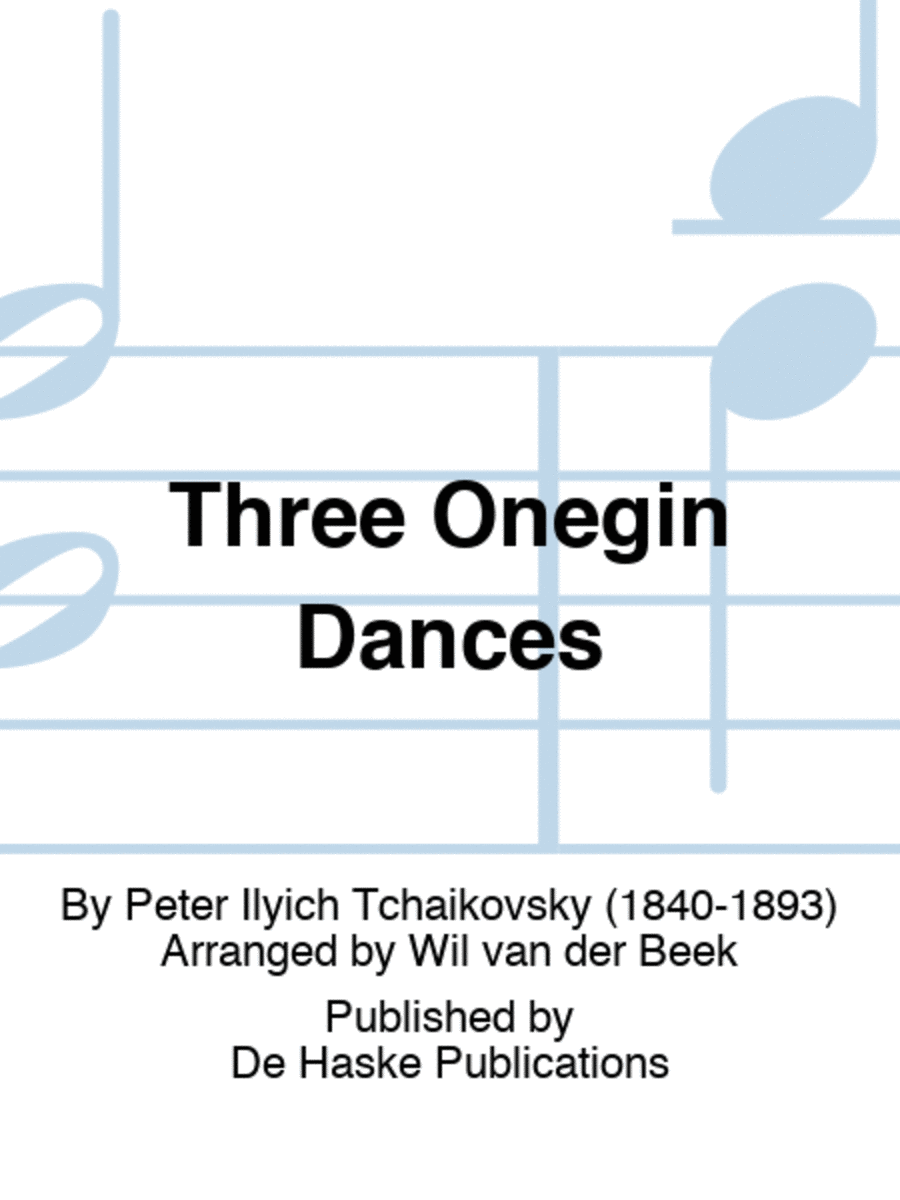Three Onegin Dances$181.95 - See more - Buy online Lead time before shipment : 2 to 3 weeks Format : Score and Parts Concert Band/Harmonie - Grade 3 Instrumentation : SKU: BT.DHP-1012918-010 Composed by Peter Ilyich Tchaikovsky. Arranged by Wil van der Beek. The Great Classics. Set (Score & Parts). Composed 2001. De Haske Publications #DHP 1012918-010. Published by De Haske Publications (BT.DHP-1012918-010).Tchaikovsky is best known for his purely instrumental compositions. However, we must not underestimate him as a composer of operas. Many of his operas such as ¬Pique Dame and Eugene Onegin are still performed regularly throughout the world. Eugene Onegin (also called Jevgeny Onegin), composed in 1877-1878, was not called an opera by Tchaikovsky himself, but “lyric scenesâ€. The work is entirely dominated by lyricism. However, there are two moments that contrast sharply with this lyricism: two ball scenes, for which Tchaikovsky wrote a waltz and a polonaise.After opening with a less well-known allegro dansant, this arrangement features the aforementioned waltz, which can beconsidered a beautiful Russian equivalent of the Faust Waltz by Charles Gounod. In the opera, this waltz is actually played by a military band. The arrangement concludes with the pompous polonaise (also mentioned above) which opens the last act: the ideal music to characterize high aristocracy in the salon of a palace in St. Petersburg. Concert bandPublisher : De Haske PublicationsLevel : 
|





